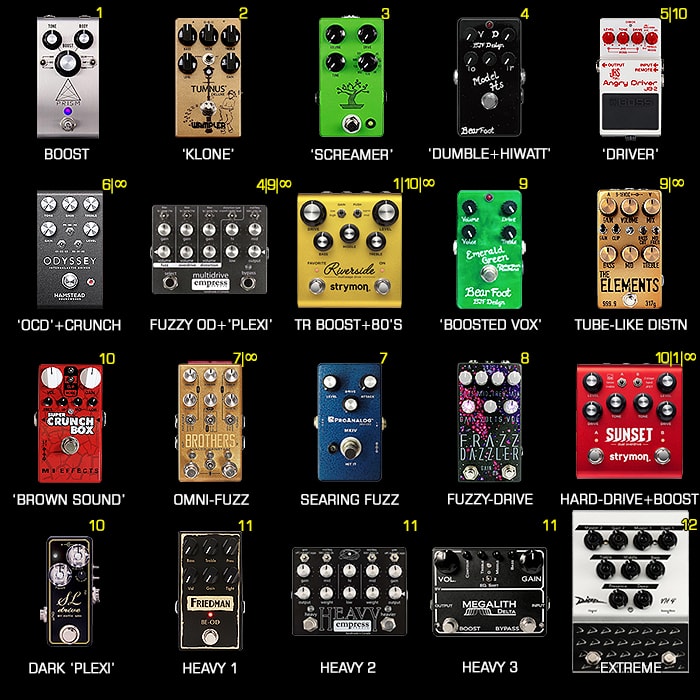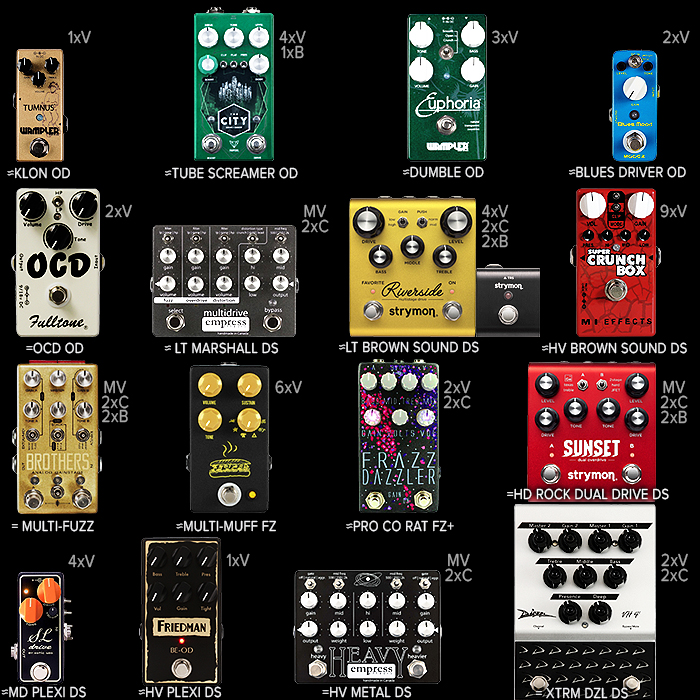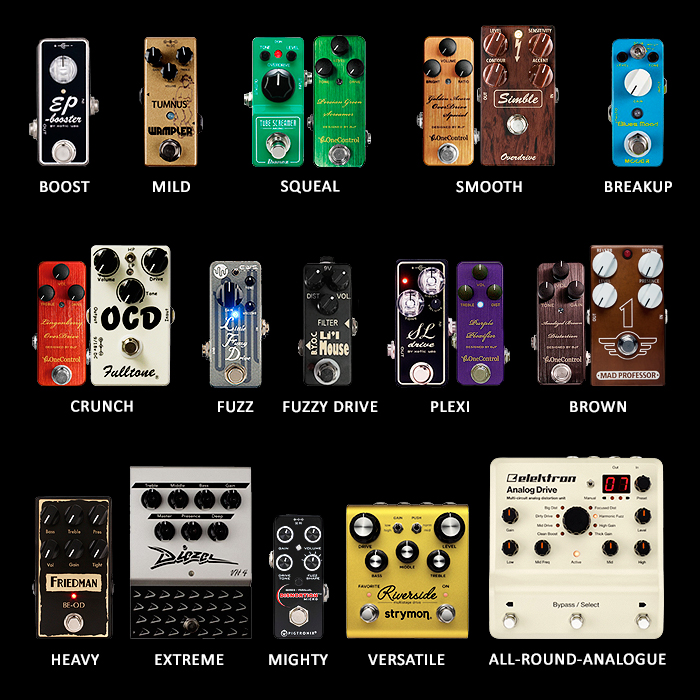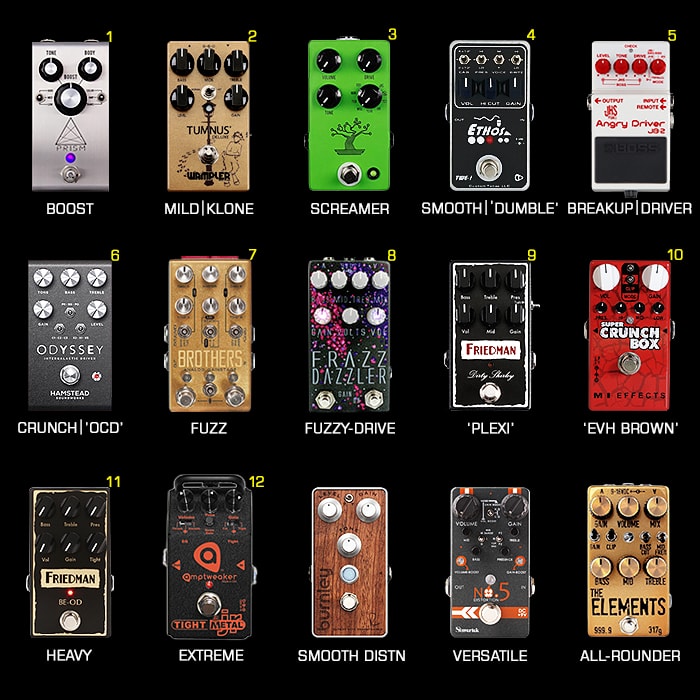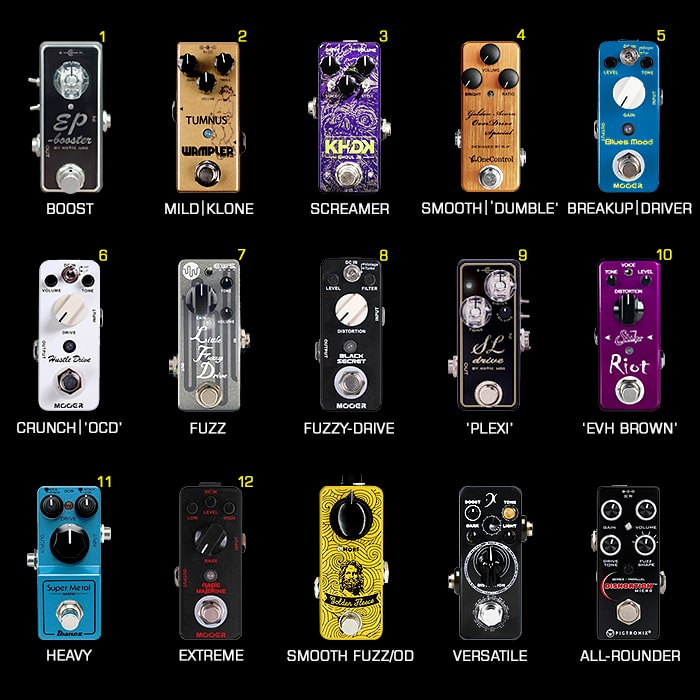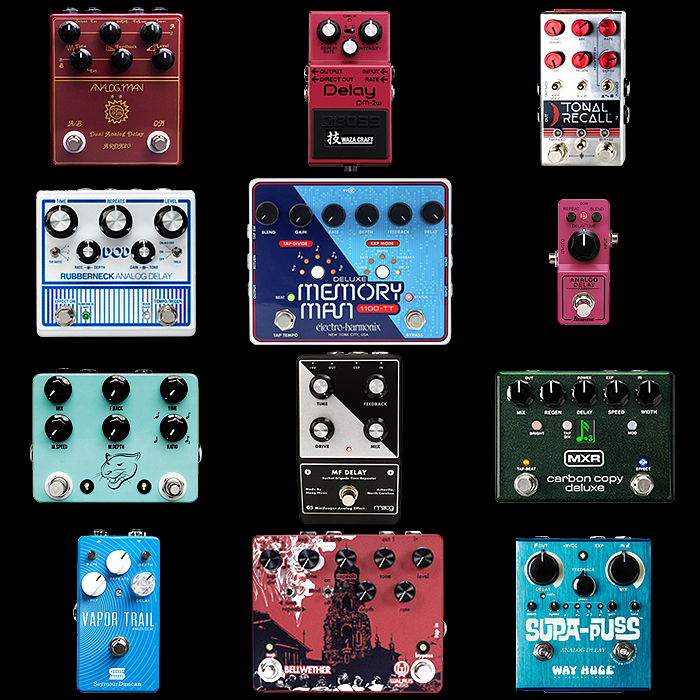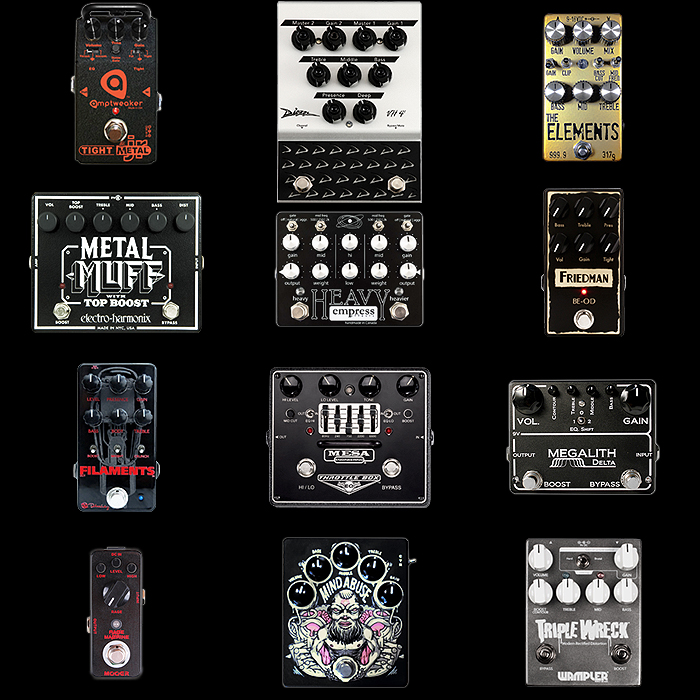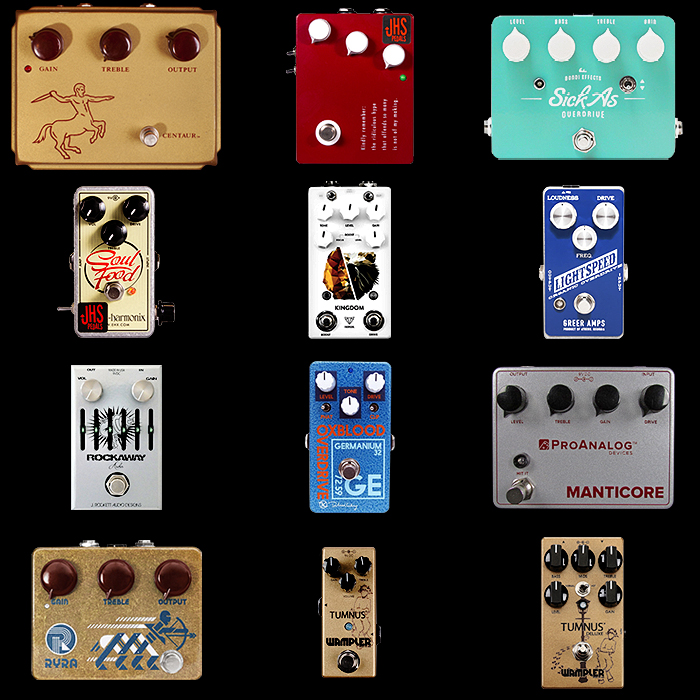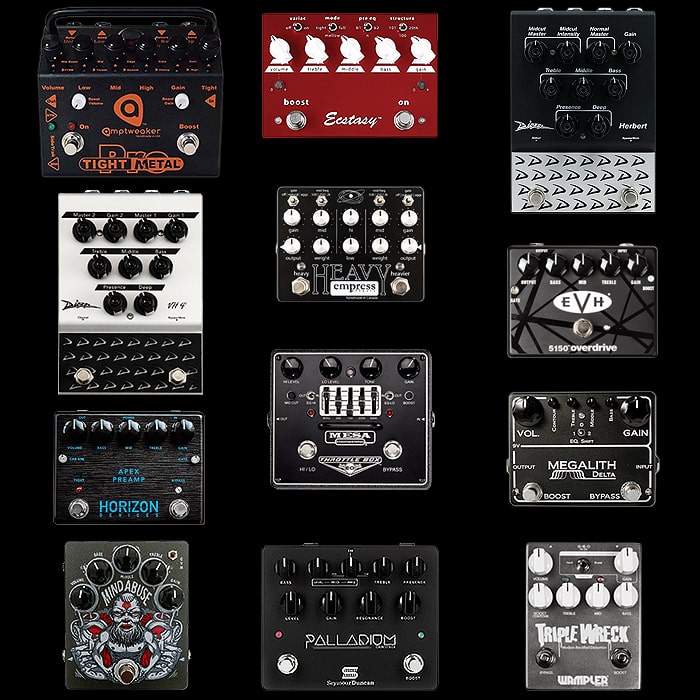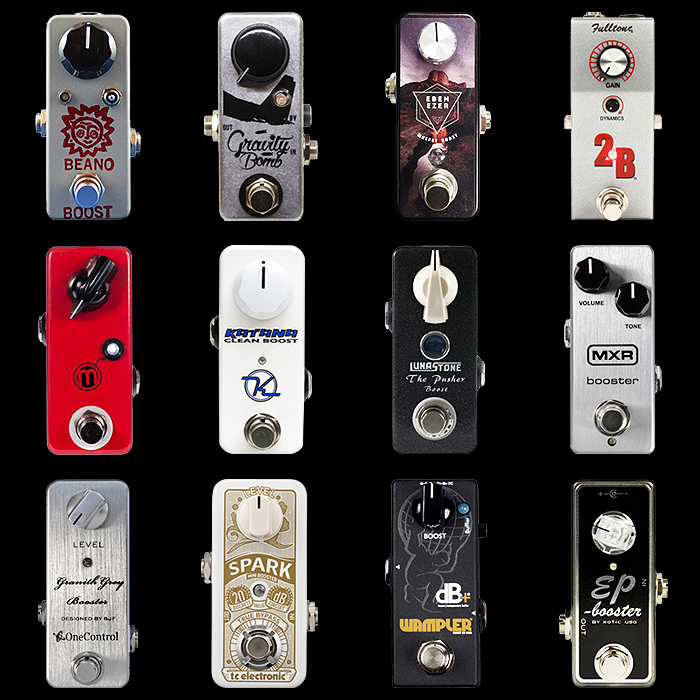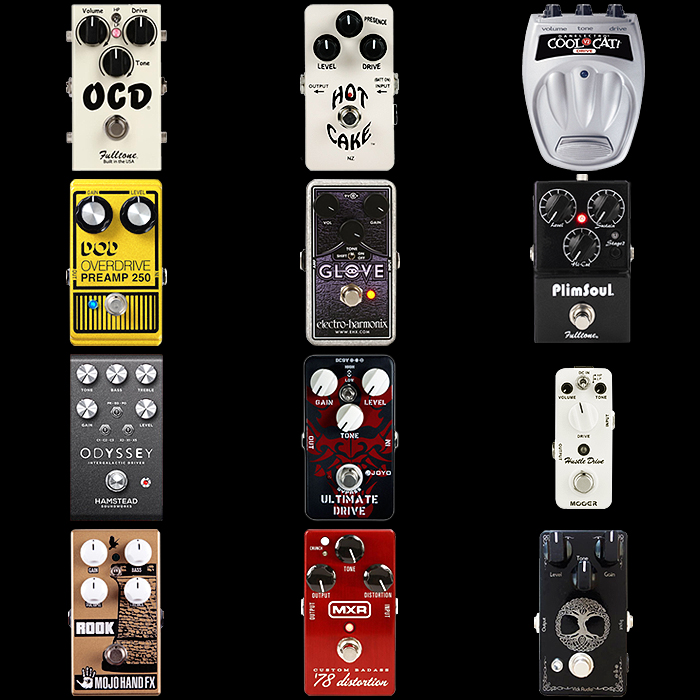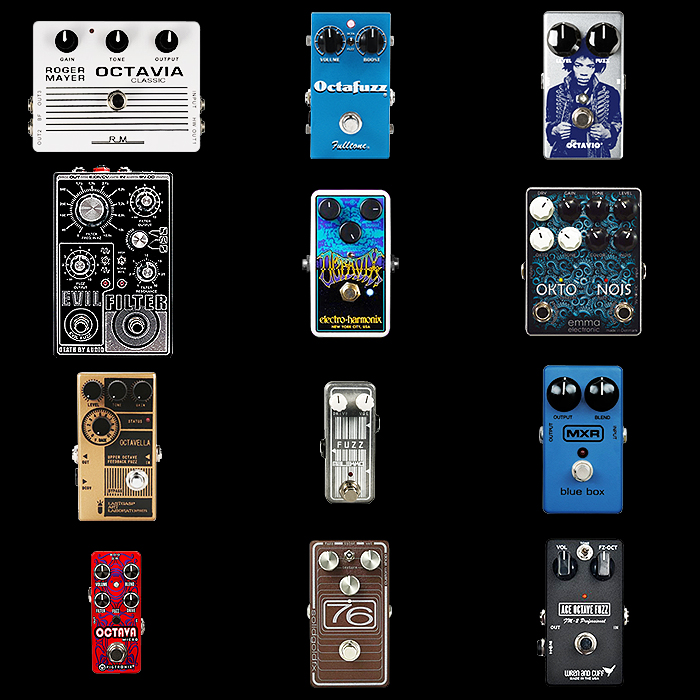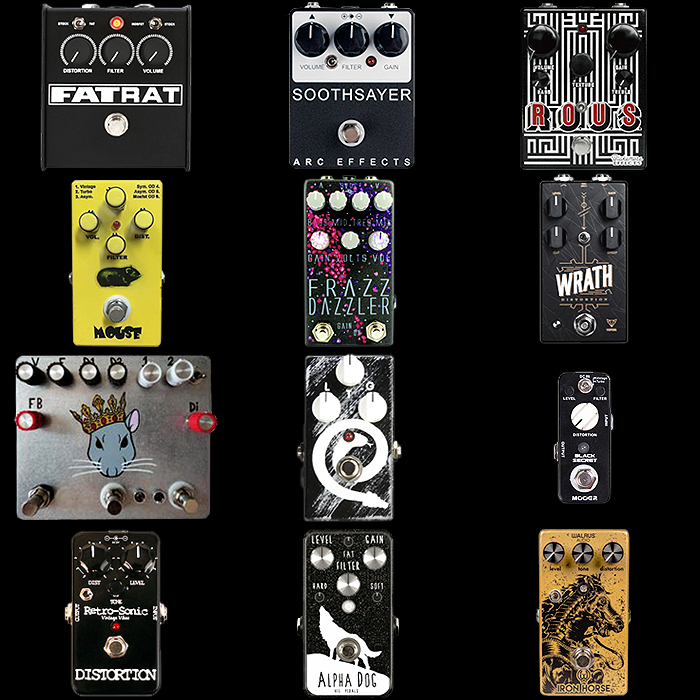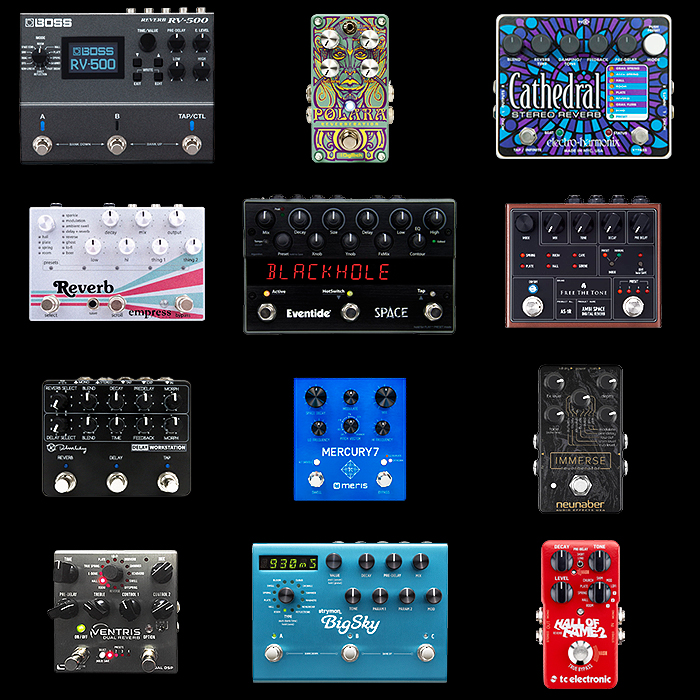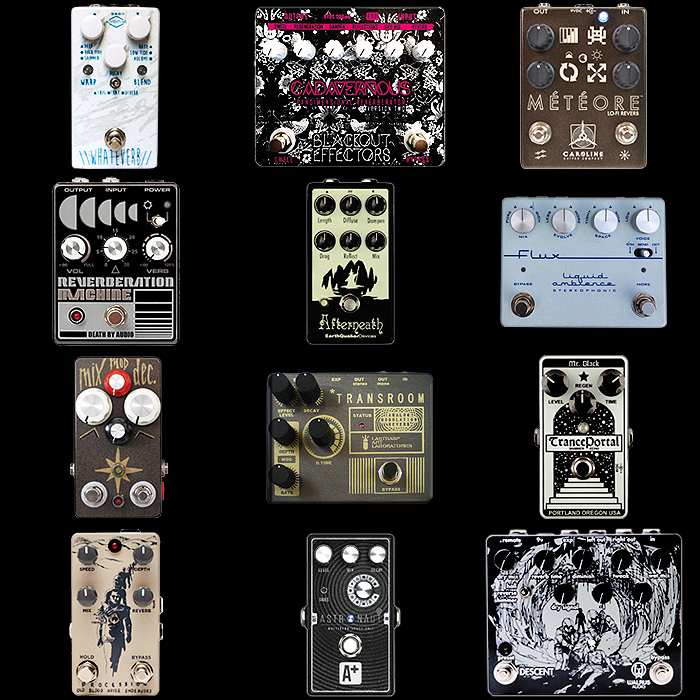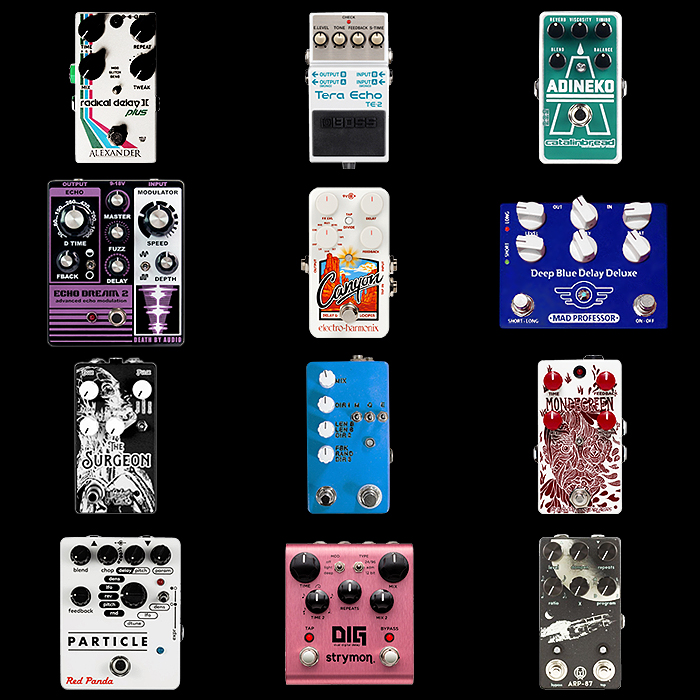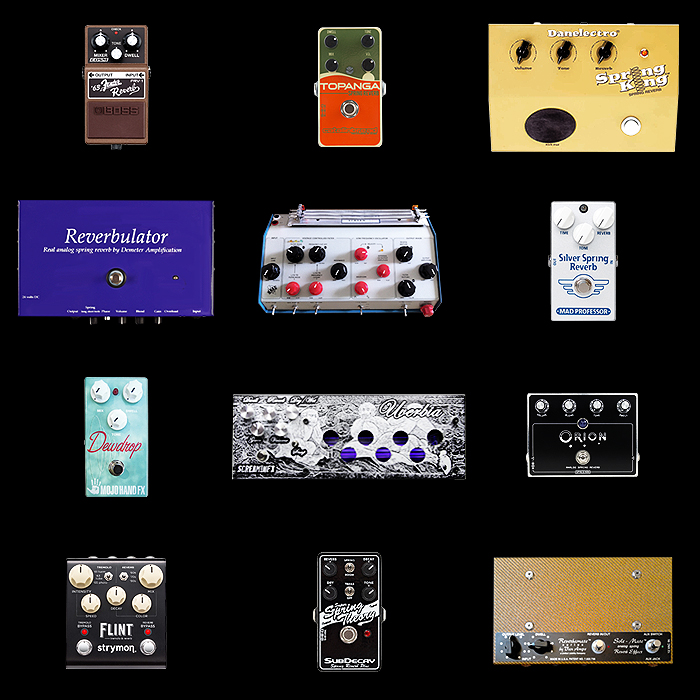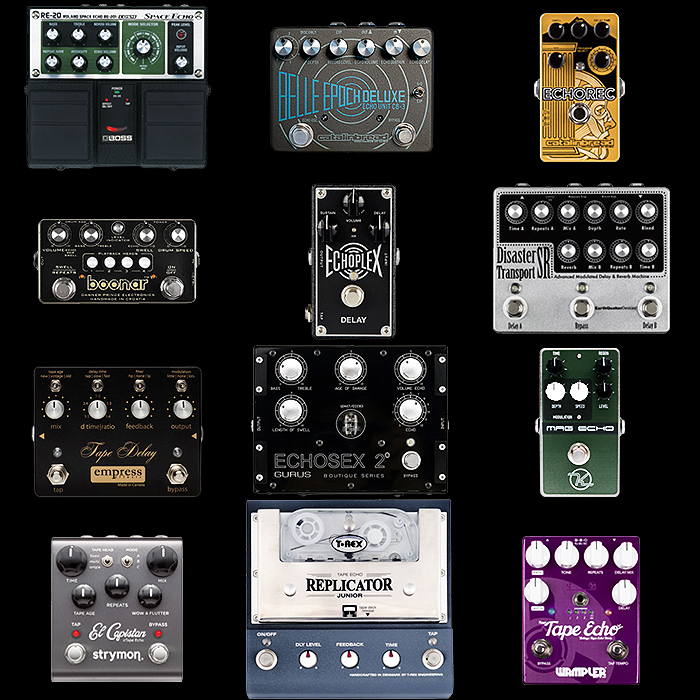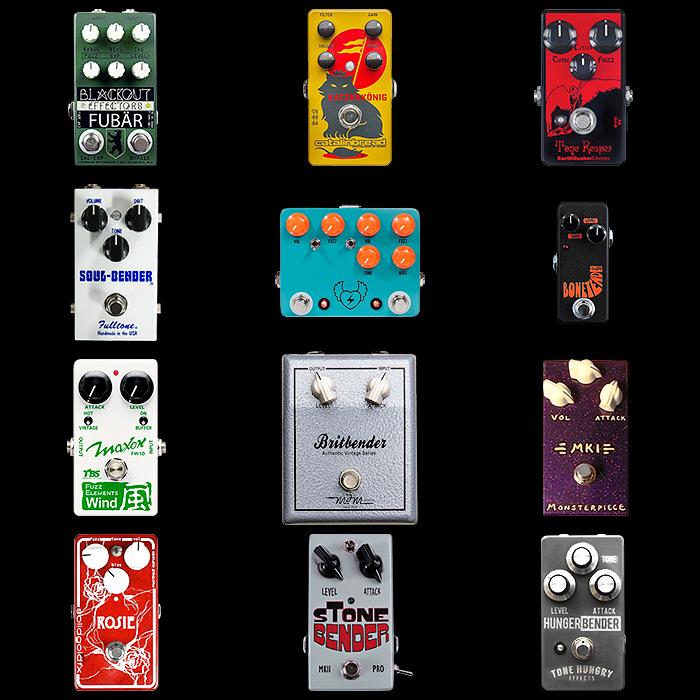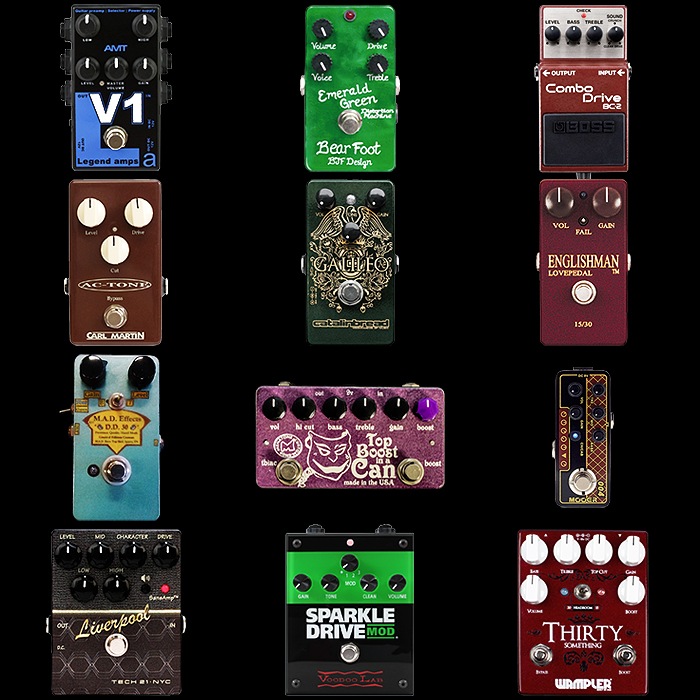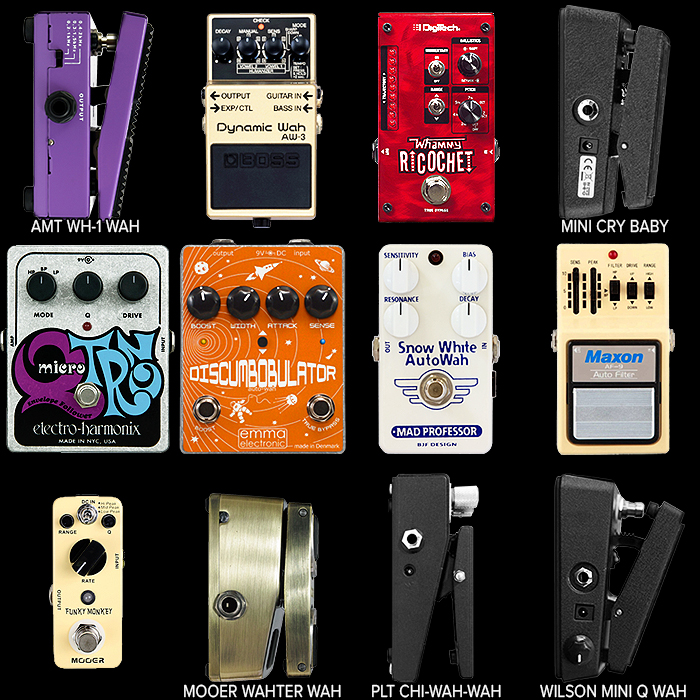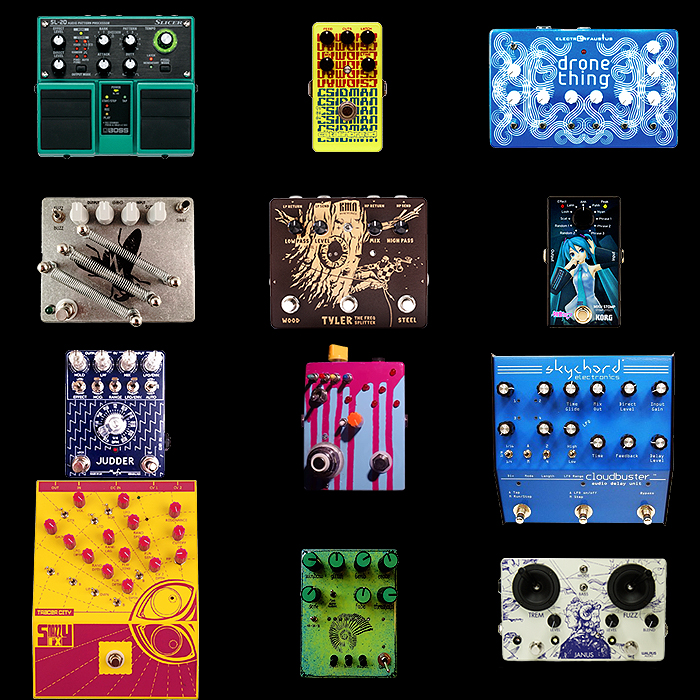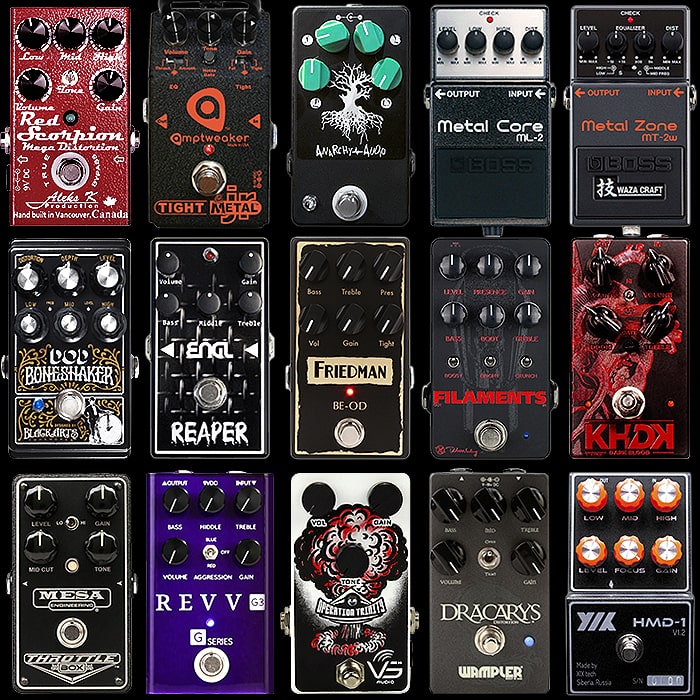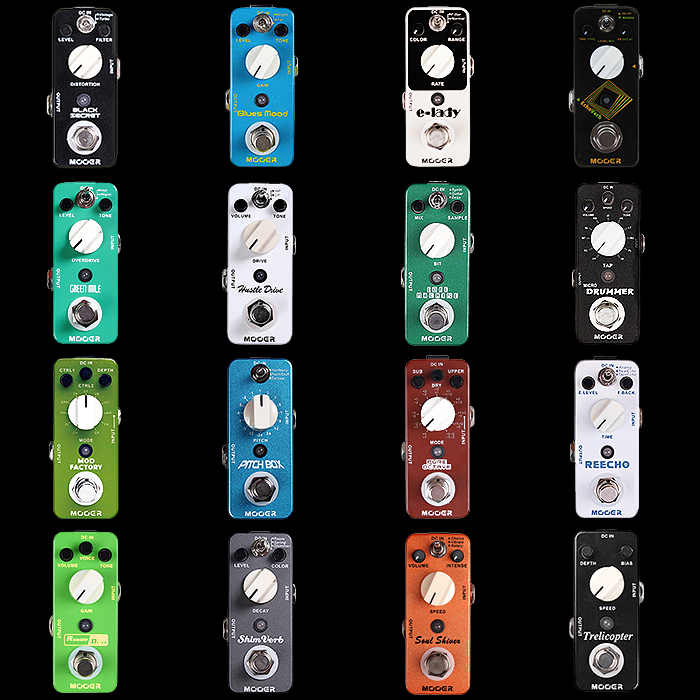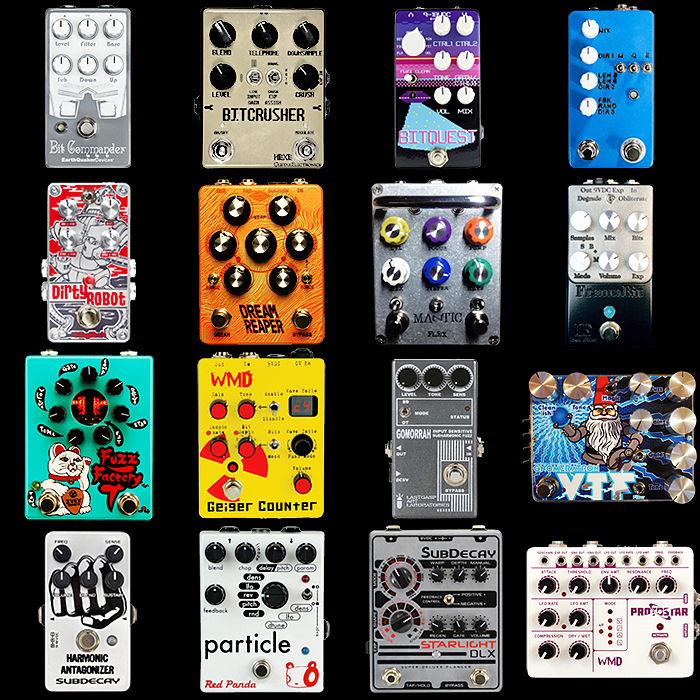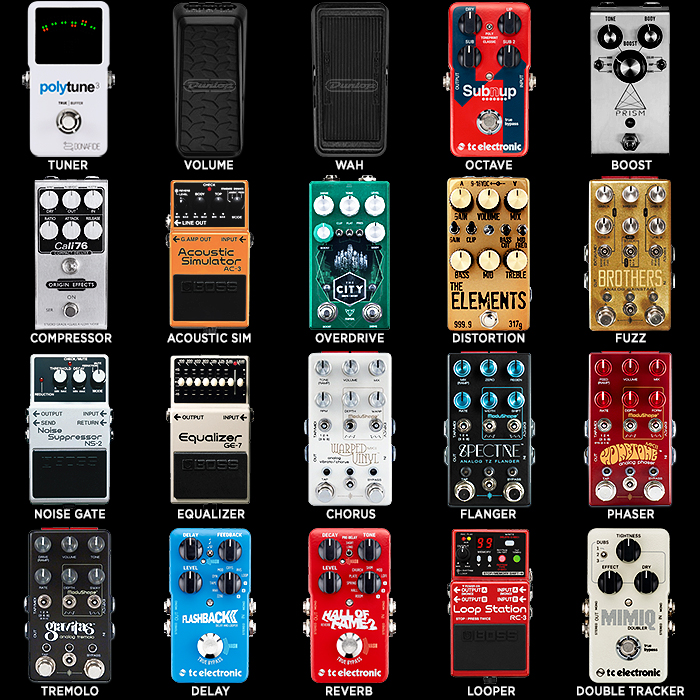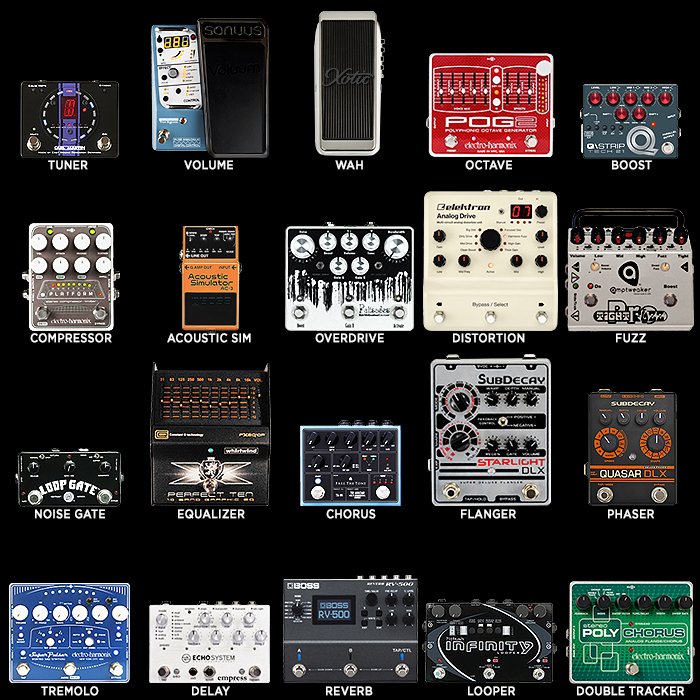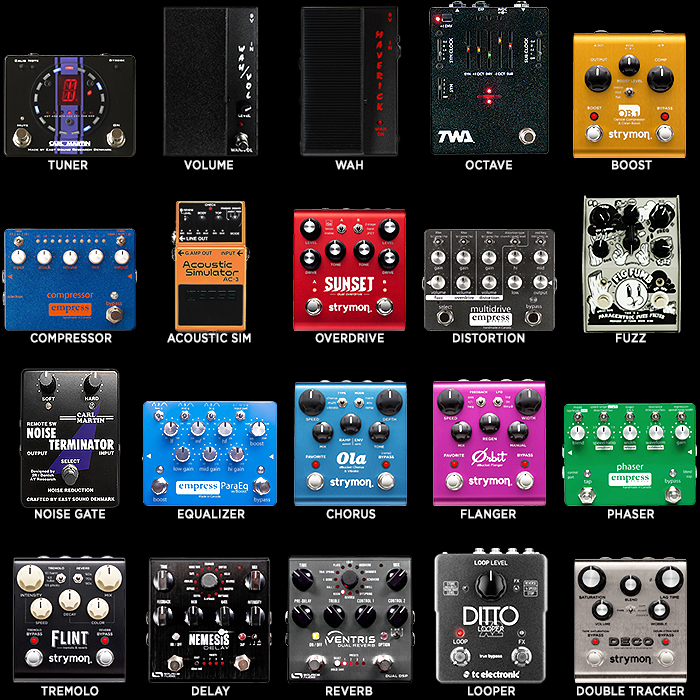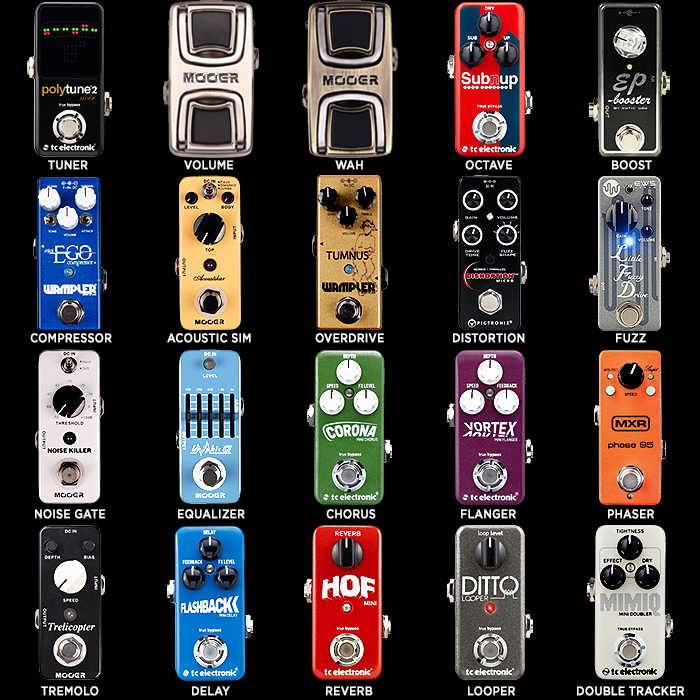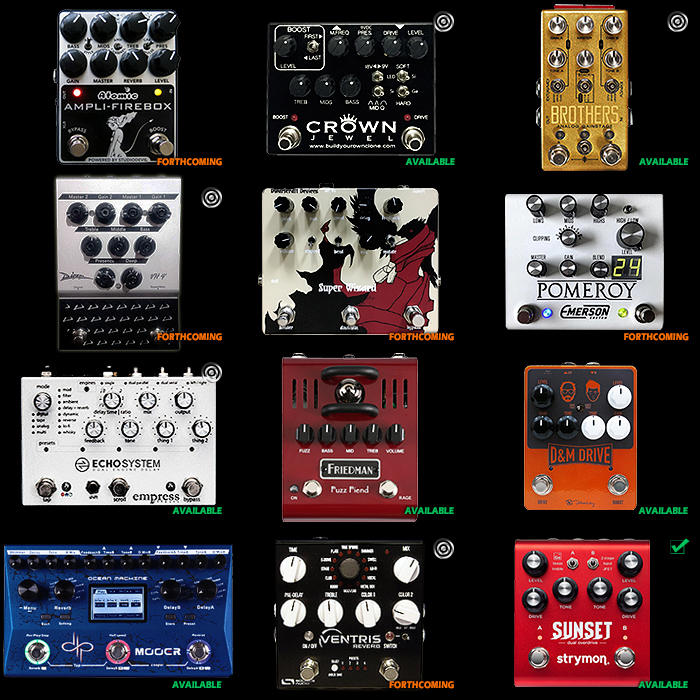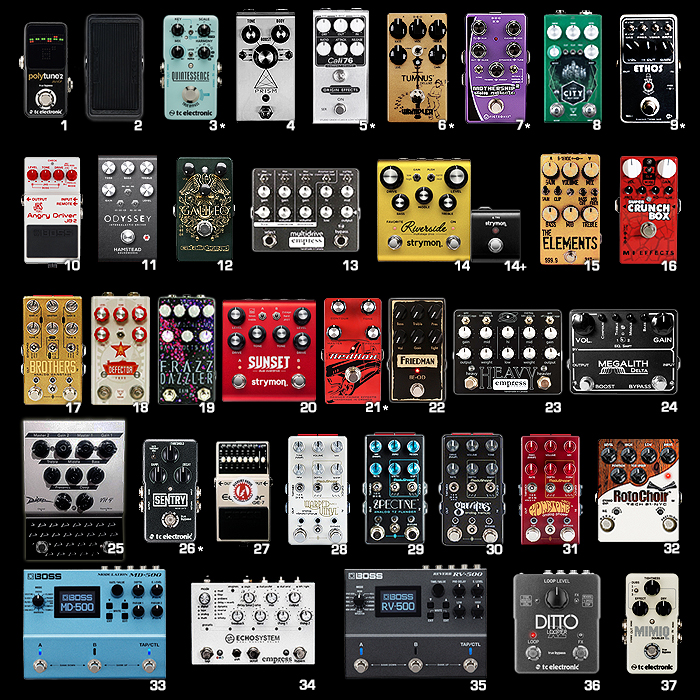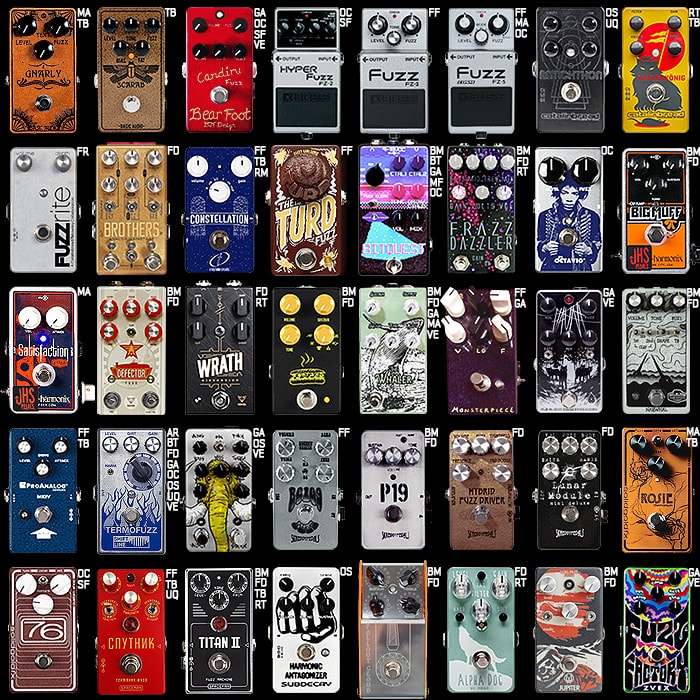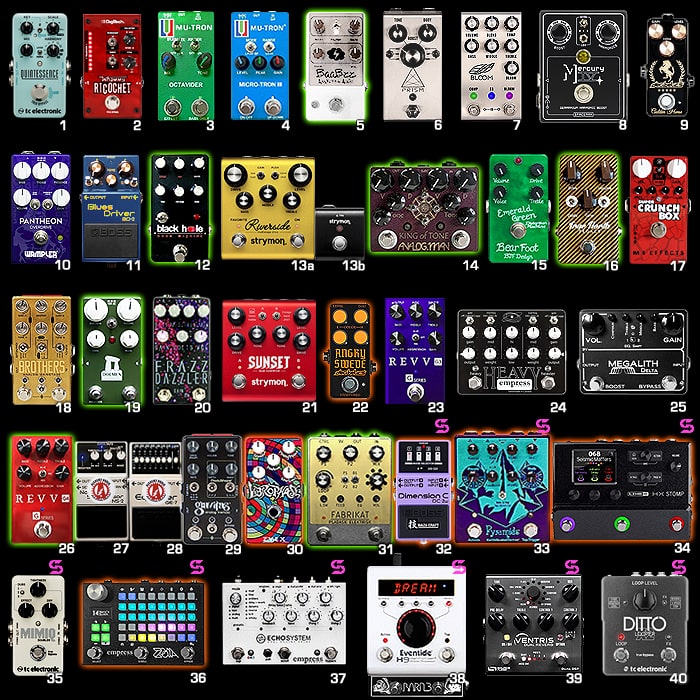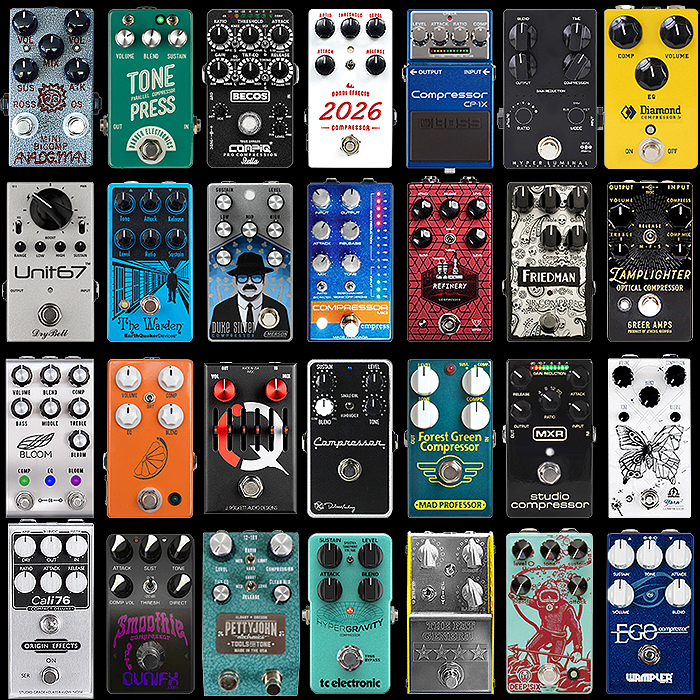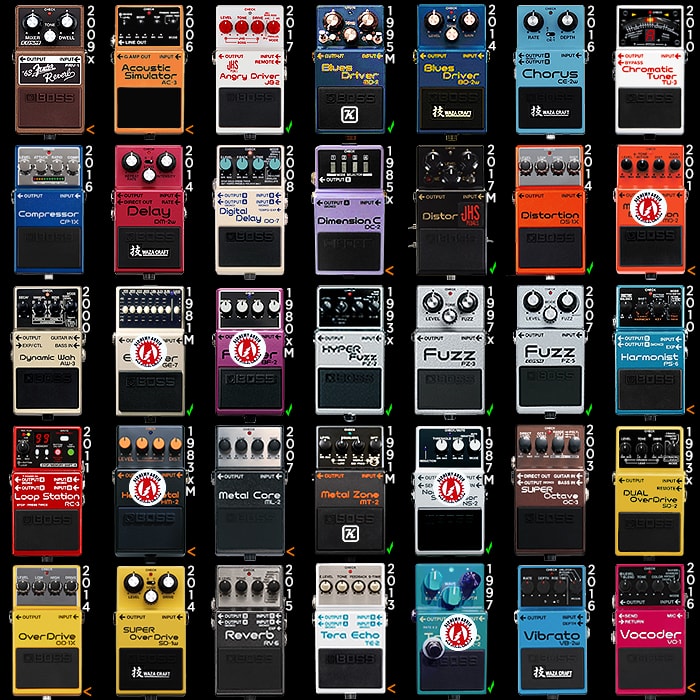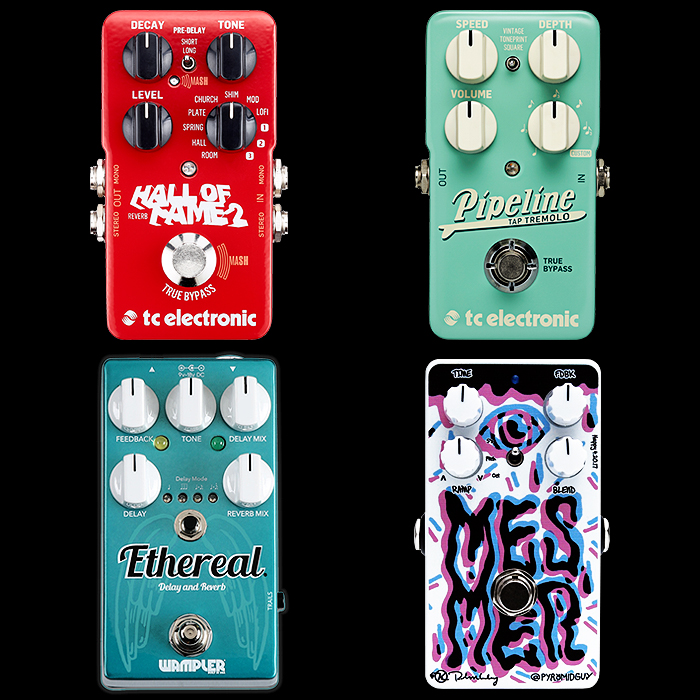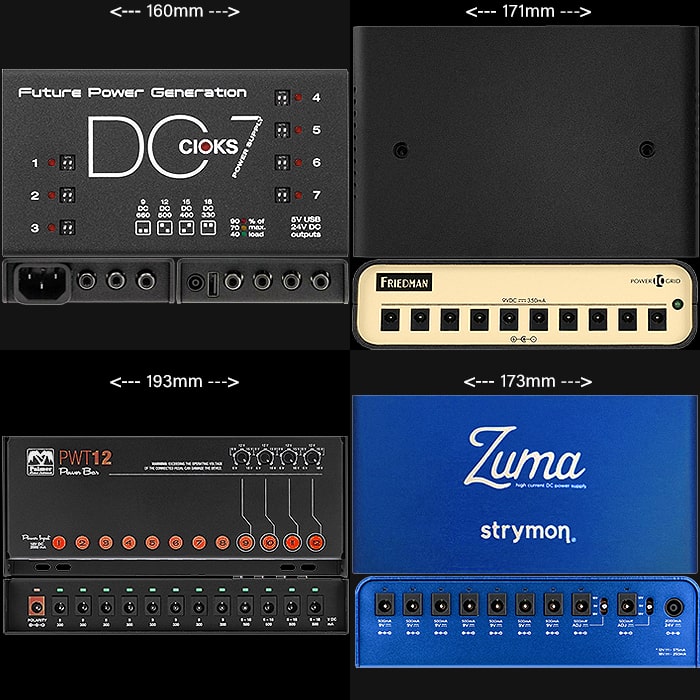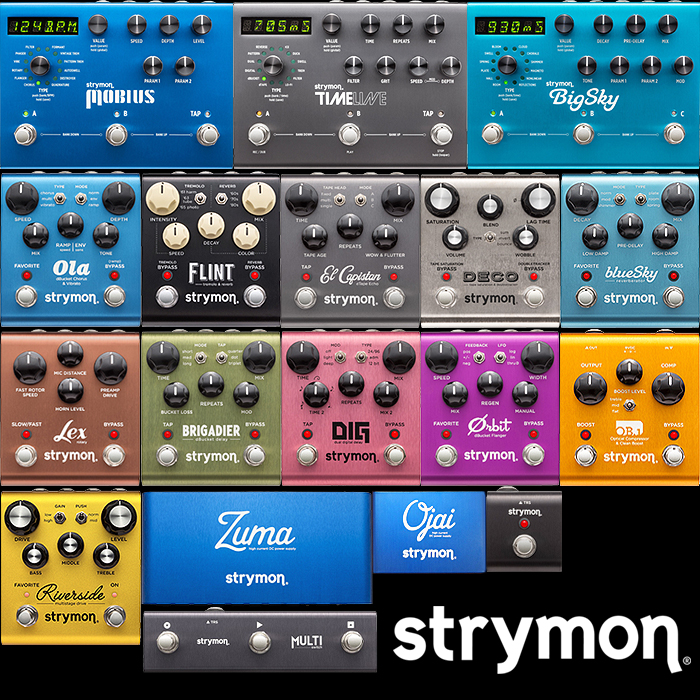Tone Quest - A Lifetime Musical Journey in Many Parts
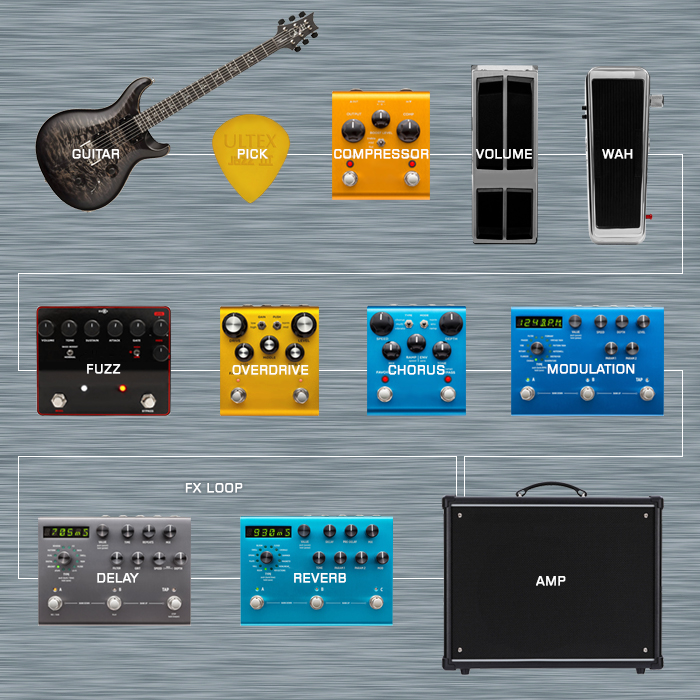
Not every guitar player ventures forth on a Tone Quest - many are happy just to noodle around with what they’re familiar or comfortable with, and have no motivation to go out and seek their own holy grail of sound. For others though, like myself, this is part and parcel of the wonder of guitar playing and ownership - finding your own guitar voice, or several of them even.
There are numerous constituent parts which go towards making up the total output sound - including at the most basic level everything that goes into the guitar and everything that goes into the amp. On a guitar, we have the starting point as the Tone Woods argument, scale length, number and type of frets, material and quality of pickups, nut, bridge and strings, and the guitar picks that most frequently trigger the string vibrations which start off the sound signal path / chain.
For the Amp it is the valves, capacitors, transformers, circuit boards, processors, speakers and assorted leads and connectors. As with guitar, you have a choice for how versatile your amp is, and how great the unadulterated output signal is. You can then choose to apply various further enhancements and tweaks through a variety of pedal or FX unit ad-ons. Or concentrate on swapping out and improving the core component parts - switching to vintage creamback or greenback Celestions for instance.
The obsessives will typically skew their Tone Quest towards certain key areas. Most of the guitar gurus I follow are still largely allegiant towards valve amps, although that is changing, as many bands now rely solely on solid state amps and technologies like Fractal’s Axe-FX or Kemper Profiling Amps. The gurus though probably own a good dozen different amps (mostly valve) to go with their more than a dozen guitars - featuring typically the 4 classics - Fender Strat and Tele, Gibson Les Paul and PRS Custom 22/24.
Part of this is a tool analogy - choosing and using a particular combination of components to arrive at a specific sound for a specific usage occasion. Sometimes there is so much late stage signal processing, that the only key thing about the guitar is how playable it is, because the sound is almost entirely derived from the output technologies rather than the input ones.
What most guitar players like though is an obvious and tangible connection between what they do on and with their guitar, and what comes out of whatever cabinet speaker they are using. You can of course get guitars to simply behave as slave midi devices, but most would argue that this takes away the musicality and the virtuosity of the instrument-to-musician interface. In your own quest you can be as obsessive as you like, and as intensive as you like, and you’re welcome to settle down at any stage once you have reached a happy medium.
For several individuals this is a life-long journey - finding their perfect guitar, and perfect clean and distorted voice - with and without pedals - including use of Reverb, Delay, Chorus, Overdrive, Distortion, Phaser, Flanger, Tremolo etc. You can find your ideal voice for each of those occasions, and the perfect pedal or fx, amp and guitar combination.
Budgetary considerations here are significant, as the vast majority of us are on limited budgets, and we can’t necessarily afford the full range of Strymon pedals - the 7 of theirs I love - Big Sky Reverb, TimeLine Delay, Mobius Modulation, Riverside OD, Ola Chorus and Vibrato, Lex Rotary and OB1 Boost and Compressor come to a magnificent total of £2,473 - the same price as a decent guitar and amp.
So you are likely to do this in phases and very much in line with budgetary considerations, adding a pedal here and there as and when you can afford it. The best modelling and FX racks now have near parity with many of these pedal effects, and you can tweak numerous screens of parameters via desktop, laptop or tablet. Many players though prefer the instant hands-on gratification of boxes with always accessible dials and buttons.
Here follow most of the key constituent parts of a Tone Quest Journey:
Guitar Essentials
In a previous post, I have discussed the decision making process of choosing a guitar, and much the same criteria apply on a Tone Quest. I believe more than half of players support the Tone Woods argument, so it is up to you whether you decide on a guitar based on what woods are used for body and neck. There are of course other practical considerations such as durability, weight, feel etc. and certain woods show up marks more easily than others.
Next is the scale length, neck shape and general feel of the neck - are you OK with gloss finish, or do you prefer a more natural satin or oiled neck - what shape and curvature, and how flat / radius of the fretboard. The benchmark standard for humbucker guitars tends to be Mahogany Body with Maple Top, and Maple Neck with Rosewood or Ebony fingerboard, for single coils the trend is towards Alder and Ash, Maple Necks and Maple or Rosewood fretboards. I personally tend to steer clear of lighter fretboards as they show up marks and dirt too easily, and soon become tarnished.
The scale length argument pivots between 22 and 24 frets as to relative placement of Neck and Bridge pickups and the quality of the harmonics they pick up. The more old-school vintage types swear by 22 frets, while the modernists typically prefer a full 2-octave scale of 24 frets.
Note that many makes of guitar are unnecessarily wired in a very complex manner, so if you are planning to switch out electronics or pickups, then this may play part in your criteria and considerations. I have long argued for a more open standard of plug-and-play components where it should be relatively easy for the average guitar owner to switch out key components - this is currently far from the case.
Tuning Pegs / Machine Heads
An often overlooked component which is critical to the tuning fidelity of a guitar. If your tuning does not hold, then all the hard work you’ve done to arrive at the best sound will be for naught if your guitar cannot successfully carry a tune. I’ve long held that all but the very cheapest of guitars should come with Locking Tuners. Yet there are guitars right up the price bands, many way above £1,000 which inexcusably come fitted without locking tuners. The Phase 2’s on my PRS CE are excellent, but I had to switch out the crappy ones on my PRS SE Holcomb for some proper Schaller M6 Locking Tuners. Schaller make great tuners, and are the manufacturer of choice for several guitar makers, including Music Man.
Even Floyd Rose Tremolo guitars I would prefer if they too had locking tuners at the head, as it all makes for much easier string changes. There really should be no excuse for any guitar £650+ not to come with locking tuners. Note also that the headstock shape and tuning peg configuration is another essential to tuning stability. PRS and Music Man are amongst the best - the former with a tapered 3+3 arrangement, and the latter with a 4+2 arrangement - both routes ensure straight passage of strings though nut grooves. This is sadly not the case for many Gibsons - whose square headstock shapes result in strings entering nuts at oblique angles and often getting stuck - this resulting in a variety of tuning issues. For Gibsons, some sort of nut lubricant - e.g. graphite or nut sauce is essential.
Nut
The core noise-making quartet on a guitar is the strings suspended between nut and bridge, and the pickups which capture the vibrations. A nut has to be hard, resilient, durable, and have certain intrinsic fluid properties to ensure that the strings glide through its grooves consistently effortlessly. The cheapest nuts are made of plastic, many are compound elements with a high graphite content, others are made of bone or metals even. Some nut feature rollers, while most are simply arched up and away from the tuning pegs. The core PRS graphite composite nut is by all accounts exceptional, there is no record of what kind of nut is on my PRS SE, likely something in plastic. GraphTech make excellent aftermarket Tusq nuts, I may need to swap out my PRS SE one eventually - seems to be holding up fine so far.
Strings
Following on from and through the Machine Heads and Nut are the guitar’s strings - which unsurprisingly make a significant difference in sound - the very best are cleaner, clearer, more resonant and last longer to boot. I use in the main PRS Strings, which are supposedly OEM’d by D’Addario. D’Addario make excellent aftermarket strings, as do Elixir and Ernie Ball - all which have their own fans. Strings come typically skewed towards iron or nickel content, can be wound in different ways, and can have a protective coating - which keeps wound strings in particular clean, and helps with longevity. There are numerous boutique brands too, although be aware that some of these may be OEM manufactured by one of the big three already mentioned.
Bridge
The opposite end of the strings is anchored by a bridge of some description. This usually falls into hard-tail or tremolo varieties, and there are several of each, all with their own pros and cons and equal merits - including Tray, Tune-O-Matic, Bigsby and Floyd Rose. Generally the fixed bridges will give you better tone - or the ones that have the most contact with the body wood - which is why you typically don’t get the best resonance with Tremolos, as they are often just anchored on a couple or so screw heads.
There are numerous aftermarket improvements, there is a different tremolo option for my PRS CE made by Wudtone - this has a curved bladed front to the floating assembly which ensures maximum contact with the surface of the guitar. When I get a second Tremolo PRS, I may well check this out to see what impact this has on the tone, but evidence from the field seems sound.
While hard-tail bridges usually ensure a better tone, they don’t allow for the playing flexibility and virtuosity of having a Tremolo. I so far have one guitar of each type, and the pros and cons of each is fairly self evident, even though I love both equally.
Pickups
I have only two guitars so far - one with PRS 85/15s and the other with Seymour Duncan Alpha + Omega. I would eventually like an Ibanez or Music Man with DiMarzios, ANO guitar with Bare Knuckle Pickups, and a couple more with PAF and P90 style pickups - probably a PRS 513 or Music Man Reflex also. I have my eye on a new 2017 Gibson Les Paul Standard HP, but as I ongoingly acquire new information, and situations change all the time, my next guitar may well be something else. Some of my guitar heroes played active EMGs, and I’ve yet to decide whether to stick with passive, or to try active pickups again - I did dabble in the 80’s. There’s also the question of pickup configuration and flexibility - harmonic synergy vs 22 frets and the ongoing battle between humbuckers and single coils and vintage vs modern sounds. What I do know is that I like to have the ability to switch tone on a guitar (Coil-taps etc.), and the ability to roll back the volume to go from a distorted to a cleaner sound.
If you like to play really heavy, then clarity of pickups becomes increasingly important as you really need to be able to discern the notes through the distortion so that it doesn’t just become a muffled cacophony. My 85/15 pickups are cleaner and ringier than the Seymour Duncans which have a growly nature to them when cranked - even thought they maintain clarity as you up the gain and distortion. Your playing style, genre and inherent need for flexibility will influence which pickups appeal. Some can work amazingly in certain scenarios, but not so well in others - which is why it is worth spending sufficient research time to ensure you can get the appropriate range of tones out of your pickups under different conditions.
Pickup configuration is a key consideration too - my two guitars are both HH - I would also like to try HSH, HHH and HSS varieties. You need to figure out tradeoffs in versatility versus ease of use. Some guitarist prefer to have several single use instrument than a couple of multi-tools. For whatever reason though I always seem to tend towards versatility - which is why at least one Humbucker present is critical for me. Once you have a several guitars, I guess it’s easier to let go and acquire something with a much more singular purpose.
Potentiometers and Electronics
If you are obsessive about signal path, then the same criteria apply for the core electronics as for the connecting instrument cables - i.e. gold=plated terminals, % of pure copper, thickness of wire strands, quality of soldering, capacitors, transistors etc. The cheaper the components, the more they will distort and interrupt the signal path - the better the components the purer and more high fidelity the signal.
The pots on the PRS CE are obviously superior to the ones on the SE, although I’m not sure to what degree. I am also not 100% clear on how good the better quality ones are. There can be a huge discrepancy in component costs, and you can always make significant improvement for just a little more outlay. What is less conclusive is exactly how much outlay is required to get to the golden standard level. Guitar spec lists are still somewhat incomplete to my liking. I would love to get a proper mini manual / guide with my guitar detailing everything onboard - including all the default setup measurements. As yet no manufacturer does this.
If they were as savvy as the car manufacturers, they could have a much more significant aftermarket - witch customers choosing to switch up to better quality and pricier alternatives than standard fittings.
Picks / Plectrums
I have tried over a hundred varieties already now, and have found several that I love - and almost entirely in the smaller Jazz Pick form-factor. I’ve completed the journey through all the Jim Dunlop picks now, bar the two metallic ones (aluminium and steel). I’ve also started sampling the various Timber Tone ones - horn, bone, wood, minerals, metals etc. - they have an exotic Jazz Variety pack which I am likely to get at some stage in the near future. My favourites at the moment are the Ultex varieties - both vanilla and Petrucci variations, as well as the Dava Poly Jazz Picks. I tend not to like the nylon ones so much, but the slightly more matt textured and grippier ones. I am so far also impressed with the Timber Tones ones I have tried - and I will do a full review once this process reaches its conclusion. By which time I will hopefully have tried pretty much all the different materials a Jazz pick is offered in.
Cables, Leads and Connectors
Cables and Leads play a key part in your guitar sound, and there are several different leads in the equation, including power leads for however many pedals you to choose use. The number and lengths of cables all go towards reducing the signal strength and muddying the sound, which is why the longer the lead, the better quality it needs to be. For power leads, phasing is critical, and if these are not wired up properly you will end up with audible hum and other white noise which detract from the purity of your signal path and tone.
My first lead was a Planet Waves American Stage 20ft Kill Switch Instrument Cable - which was kind of fine, but kept on getting in my way - meaning I’ve gone wireless as intended. I now connect my guitar into amp or signal chain by means of a Line G G10 Wireless Relay - and jolly good it is too. For my needs, not only is it perfectly adequate, it is just perfect all round. I don’t seem to suffer any ill effect - in fact I get less unwanted noise, and a lot less hassle than with the cable. I looked into buying a silent PRS lead, but this retails at nearly £100 - so I am more than satisfied with my wireless solution.
For my various patch leads and interconnecting cables, I make sure I buy good quality branded leads, slightly above average price, but nowhere near the top whack of what is available. Some obsessives are so fixed to the analogue - that everything has to be old school - including the cables. For the average home user though, not using a G10 is close to madness!
Pedals and Multi-FX
All the amps I like are modelling amps of sort. It is critical for the amp to sound good on its own, and both the Fender Mustang IV and the Boss Katana 100 certainly do that. Both have FX loops on them too, so I am not restricted to purely the onboard FX, but can avail myself of the best pedals that are out there - and what a world that is.
There are literally 1000’s of pedals out their ranging from £30-£40 (Joyo, Tone City) to more than 10 times the price (Dearest at around £500 - £600 - Eventide, Strymon). I’ve already touched on some fo the amazing Styron pedals which are basically sold in £ as $ equivalent, meaning the more expensive ones are priced at $/£479 and $/£449 - most are in agreement that the BigSky and TimeLine are two of the very best available out there. And there is such an enormous variety - covering all manner of synthesis and simulation, modulation and drive - key brands include mainstays: Amptweaker, Analog Alien, Analog.Man, Bogner, Boss, Blackstar, Darkglass, Dawner, Decibel 11, Diamond, DigiTech, (Jim) Dunlop / EVH / MXR / Way Huge, Duesenberg, EarthQuaker, Egnater, Electro-Harmonix, Empress, Ernie Ball, Eventide, Fender, Fishman, Fulltone, Friedman, Hotone, Ibanez, Joyo, Keeley, Korg, Line 6, Mad Professor, Marshall, Maxon, Mesa Boogie, Mission, Mooer, Moog, Morgan, Neunaber, Orange, Pigtronix, Radial Engineering, Seymour Duncan, Source Audio, Strymon, Suhr, TC Electronic, Tech 21, Tone City, T-Rex, Truetone, Voodoo Lab, Vox, Wampler, Xotic, and Zoom - there are also 100’s of smaller boutique manufacturers like Aguilar, Amplified Nation, Arion Modified, Ashdown, Bigfoot Engineering, BK Butler, Black Arts Toneworks, Catalinbread, Chase Bliss Audio, Dinosaural, DOD, Emerson Custom, Emma Electronic, F Pedals, Fairfield Circuitry, Fire Custom Shop, Free The Tone, Function f(x), Hudson, Jetter, JHS Pedals, JRAD, J Rockett, Kingsley, Lawrence Petross Design, LovePedal, LR Baggs, Mr Black, Old Blood, Origin Effects, Palmer, Peterson, ProCo, Providence, Rowin, Stone Deaf, Thorpy FX, Two Notes, Van Weelden etc. etc. - all of these can produce amazing pedals within their price point.
If you’re really into your pedals you should look up That Pedal Show and Gig Rig Dan - Mick and Dan really know their stuff and if you’re serious about it, ideally you should let Dan make you up a Pedal Board - of course you need a budget in the £5,000 - £10,000 range, but he really does do most of the best boards out there.
For me, I would rather rely more on Digital Processing onboard one of my modelling amps, and then apply an extra special pedal or two when needed. I aim to end up with no more than 10 or so pedals in the end, while many guitar players have fourscore or more.
Amps
For many players, it is the Amps and Pedals that carry more weight than the guitars - the most expensive of amps, a top of the range Dumble - retails at around $30,000 which would buy you a great number of amazing guitars.
I happen to prefer solid state / digital amps for several reasons, and am pretty taken with my Fender Mustang IV and Boss Katana 100. Boss’s Waza Craft innovations have been an amazing step forward in solid state amplification, and with Fractal’s Axe-FX, Line 6’s Helix, Kemper’s Profiling Amp, and PositiveGrid’s Bias Amp, as well as the Atomic Amplifire Amp - digital sound processing is really coming of age.
Most of the high-end stuff is still based on separate heads and cabinets, but eventually this will filter down to more domestically suitable combos - where I prefer to operate. I really don’t have the space for vast cabinets, and for practical purposes, I will limit the current Amps to around 3. End goals being Half a dozen guitars, 3 or 4 amps, and around 10 key pedals or so. This will hopefully be sufficient to get me to where I need to go.
I am still fairly early on in the process, and you have to try outside your comfort zone too - just to firm up what you don’t like, as much as what you do, and who knows - your taste could very likely change in the process anyway, so try and be circumspect and properly scientific how you go about it. If you go the Valve Amp route, you have various options in experimenting with different types of Valves / Tubes - on certain amps it’s relatively easy to switch out transformers too, as well as speakers.
The Hot Rod Approach
Some players like to strip things down to bare essentials - having very simple guitars with few or no tone settings, same for the amp - just a clean and a drive channel - and then you custom mod everything with simple components, and become very reliant on a wide variety of pedals which provide the bulk of the signal chain.
In this way you can ensure a clean and pure signal path, meaning that you can get the truest output sound in this fashion. It is the diametric opposite to my own current approach which relies on ultimate flexibility within guitar and amp, and simply relies on pedals for rather singular refinements. A really great pedal can totally change / save / make your sound - but it involves a lot of clutter and some degree of fiddliness.
My approach is generally leaner, although for some purists, the signal chain may be overly compromised. At a later stage, I will be looking into the Line 6 Helix and Fractal’s Axe-FX to see if those routes can wholly get around the need for any pedals. The band Periphery certainly seems to be able to cope with just using Axe-FXs.
The Signal Chain
The above infographic illustration which I assembled, shows many of the key parts of a Tone Quest, and how the constituent parts of the Signal Chain are set up. It is not just a matter of assembling the correct parts, it is the order you align them in which counts too. The above visual shows a very common signal path with the Delay and Reverb alone as part of the FX Loop, but there are hundreds of different combination as to what sequence you place each component part, and most will have a significant impact on the resulting tone.
You often get moments of unique serendipity by throwing out the rule book and just having a bash at it any which way - you also run the risk of generating something truly horrific sounding - but that’s all part and parcel of the adventure.
As I continue on my voyages, I will post relevant updates when I have achieved any significant goals or milestones - new equipment acquisitions etc. This will take a lot of trial an error, but that’s the fun of it all. We’ve never had more variety or more potential to contend with, and there are several different paths to Tone Quest Nirvana...





















